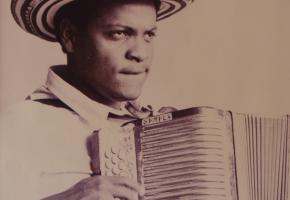Everybody has heard the sound of Peru. Anyone who has listened to flamenco, modern jazz or Afro-Latin music, will have heard even more. But most don’t know it.
In 1977, Paco de Lucía attended a party in Lima, during his South American tour, organised by the Spanish ambassador to Peru, where the legendary singer Chabuca Granda performed, accompanied by her percussionist Caitro Soto playing, literally, a box. The sound of the Peruvian cajón mesmerised the flamenco star so much that, after convincing Soto to sell it to him, he took it back to Spain. From then on the cajón became integral to Paco de Lucia’s sound and has been the staple instrument of flamenco ever since, but also used in many other genres, from rock to pop.
Few of us have listened to Peruvian music on its own terms, however, which is why PeruJazz’s long over due visit to London presents a rare chance to do so. The group was founded in 1984 by percussionist and composer Manongo Mujica, saxophonist Jean Pierre Magnet and cajón player Julio ‘Chocolate’ Algendones, who coincidentally became Chabuca Grande’s cajonero of choice after Caitro.
Manongo grew up in Lima, studied in Vienna with Klaus Stein and joined the rock band The Mad’s, with whom he recorded four songs in the Rolling Stone’s studio in London. Back in Lima in 1973, he formed an ensemble with Susana Baca, before founding the “Manongo Mujica Quartet” which would later become PeruJazz. Meanwhile, the prodigious Magnet had been playing as a child with his dad at Peru’s Country Club Hotel, before being sent to study flute at the National Conservatory of Buenos Aires in Argentina, followed by Jazz Studies at the University of Southern Mississippi and finally at the prestigious Berklee School of Music of Boston.
Together with Algendones, they set out to find the answer to an essential question, how does Peru sound?
“We wanted to make a quartet without a piano to prioritise the sound of percussion, especially the Peruvian cajon, which at that time was an instrument practically unknown throughout the world,” says Manongo. “We had a genius in maestro Algendones and we wanted to put his sound at the same level as a pianist. The cajón replaced the piano and the success of Perujazz in the first European tours was that it was a quartet that had a saxophone, a bass, a drums and a cajón. That was a unique sound because we prioritised melody and rhythm."
Indeed, this exciting new band captivated audiences worldwide, performing at Umbria Festival ( Italy) in 1987, alongside Sting, and for two consecutive years at the Montreal Jazz Festival (1989,1990) as well as festivals in Miami, Mexico, London, Buenos Aires, Santiago, and Hamburg. The quartet’s fusion of traditional Peruvian music and jazz was groundbreaking and its genuine thirst for experimenting garnered respect from jazz musicians and audiences alike.
“Perujazz always wanted to experiment in a broad and generous way, not out of vanity, but to open new paths, to surprise ourselves, to explore unusual languages rhythmically, harmonically and melodically,” Manongo continues. “At that time, what we played was totally revolutionary. Nobody had made a huaino with funky elements and there hadn't been any festejos with r&b elements either, so I think that inaugurated a new stage in contemporary jazz music.”
The band’s ambition was clear from the very beginning, but improvisation is not something that had to be imported:
“Every jazz player and every Peruvian is an improviser. The Peruvian by nature improvises, our entire informal economy is based on improvisation, in our day-to-day struggle, having to be creative to survive,” Manongo explains. “The average Peruvian does not receive any support from the state, perhaps payment of these people to the Peruvian economy is in their creativity, in doing business and making a way of life in the industry, in food, in all kinds of activities completely outside the Peruvian state. To do that you require a gift: improvisation”
What’s more, Peru has had it’s own unique black music history to draw on, developed from African slave communities who were brought to work in coastal areas, creating genres unlike anything elsewhere in the Americas or the Caribbean: Marinera, Festejo, Lando, Tondero, Zamacueca, and Contrapunto de Zapateo.
“Our improvisation was based on Afro-Peruvian rhythms, for example we have the festejo, the panalivio, so within those rhythmic sequences, which all have different moods, we decided to structure melodies around them, mixing them with blues, r&b, free jazz, with the entire school of North American jazz, but always prioritising Peruvian rhythms. It was the first time, I think, in the world that traditional Peruvian rhythms were mixed with the swing of Afro-American jazz."
Another differentiating element of Perujazz is its harnessing the sounds of Peru’s diverse natural landscapes - the mountains, the jungle, the coast, the wind and even the ancestral Andean culture.
“We wanted to situate our song in its geographical context. Peru has a very, very rich and diverse geography and each song of Perujazz responds to each of those landscapes. The music of Perujazz is a way to get to know the landscapes of Peru, from the coast with its Afro-Peruvian influence, to the mountains and the huaino, to the jungle where there are also atmospheric elements and those linked to ayahuasca rituals.”
After its explosion on the jazz scene, Perujazz took a 10 year break until 2001 when they reunited to record ‘Perujazz Live.’ In 2006, after the death of Algendones, the band had a major change in its line-up, and recorded a new the album ‘Mundo Nuevo’ (New World) in 2007. In 2009 and 2013 Perujazz reunited again in concerts, introducing for the first time a guitar, played by Andres Prado, whose incorporation, according to Manongo, “gave the group a series of new colours and nuances”
In 2015, the band recruited two more talented musicians: Julio Zavala (bass) whose “elegance, subtlety and way of assembling Afro-Peruvian rhythms to our work dazzled us,” and Cesar ‘Pudy’ Ballumbrosio (percussion, violin and Afro-zapadeador who performed for the Rolling Stones backstage in Peru at Mick Jagger’s special request). It is with this newly energised quintet format that PeruJazz embarks on a new world tour.
“These amazing musicians have opened a new path for the band,” says Magnet.”Tthey have enriched it and it practically sounds like a new band”.
The music world has moved on since Perujazz started almost 40 years ago. How does he see the evolution and reception of the international public now?
“Obviously the development of 'world music' as a genre has meant an opening to foreign cultures that before were previously ‘exotic spots’, looked down on by so-called civilized societies,” Manongo says. Just like jazz and black music in general were once seen as a lower artforms...“I guess, before, indigenous music was just folkloric or funny. I think this perception has changed, and there is more of an appreciation in US, Canada and Europe that music from Asia, Africa and South America is as, if not more sophisticated, vital and essential. It has made what Perujazz innovated more than 30 years ago in the world more accepted and valued today.”
At the same time, Manongo adds, internally this new era for Peru jazz with a new team has involved learning to accommodate, to learn from each other, a process that has required time, perseverance and patience.
“This next stage is one of maturity, of reflection, on how to transmit so many years of experience to a new audience and grow,” he says. “We’re beginning to work with more musicians from other cultures in our music and incorporate electronic music elements into Perujazz’s music.”
But most of all, Manongo clarifies, the band is enjoying the “the dream of being here and now, the dream of being present to our own life, the dream of awakening to a deeper listening that includes the sound of our soul, of the Peruvian landscape, of the pain, for example, that Peru is going through in these difficult times and but also the enjoyment and hope.
PeruJazz will play at Pizza Express Jazz Club on 6 February. Tickets here

















